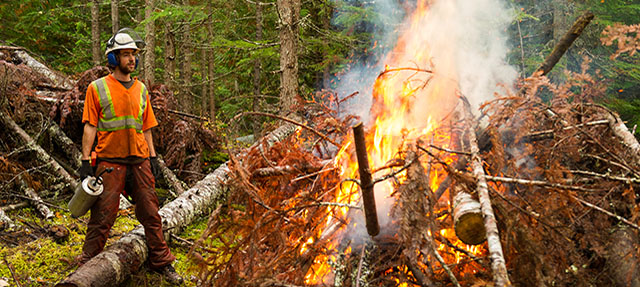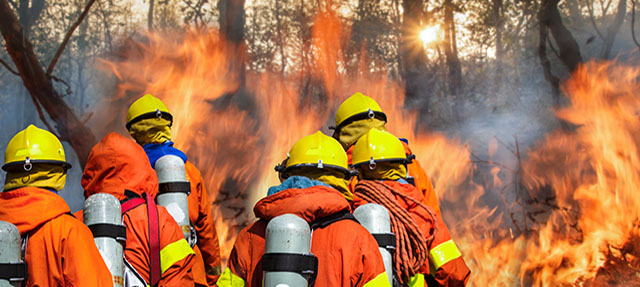The health of California’s headwater forests is in decline, leaving them increasingly vulnerable to major wildfires and droughts that threaten the many benefits they provide. Even in the midst of the current COVID-19 pandemic, California must plan for the upcoming fire season, and continue work to reduce its risks. At a virtual event last week, PPIC researcher Henry McCann described how improved management can make Sierra forests more resilient and avoid major wildfire-related disasters, and summarized the findings of a new report that identifies the benefits and beneficiaries of such management practices.
“Expanding on the pace and scale of long-term forest stewardship is going to be a heavy lift for private and public entities,” said McCann. “Developing a clear sense of the benefits and beneficiaries of improving forest health is key to motivating long-term stewardship and identifying the partners to support it.”
An expert panel moderated by study coauthor and UC cooperative extension specialist Van Butsic discussed how this translates into practice.
What does the science tell us about managing California’s wildfire- and drought-prone forests? “It tells us there are opportunities for win-win scenarios, where a forest treatment designed to reduce fire risk will likely also have other benefits—for carbon storage, biodiversity, wildlife habitat, water output,” said panelist Carmen Tubbesing, a PhD candidate in forest ecosystems and fire sciences at UC Berkeley.
Tubbesing said that we can’t implement treatments “on every inch of forest in California,” but “research has shown that even treating a fraction of a landscape can have landscape-wide benefits on a forest” and reduce wildfire risk.
Angela Avery, executive officer of the Sierra Nevada Conservancy, talked about programs her agency is involved in that “combine the social with the ecological” to build more resilient forests. California needs to build a workforce that can do this work, she said, noting that community colleges might be a venue for expanding forest workforce training. Highlighting another important gap, she pointed out that “we really need additional wood processing infrastructure across the Sierra Nevada if we’re truly going to manage our forests to resilience.”
Willie Whittlesey, general manager of the Yuba Water Agency, talked about collaborative work between his agency and a forest management project to protect the watershed by restoring local forests to a resilient condition. “We didn’t know what the direct benefits would be but we knew that we wanted to prevent our watershed from undergoing a catastrophic wildfire,” he said. “We have to look long term and we have to look forest-wide. Our forests aren’t sustainable in the condition they’re in,” he added.
Panelists also explored ways to expand forest management—and to build understanding of and support for such work. Tubbesing noted that “better investment in community outreach, and putting more people with scientific backgrounds as liaisons in the communities influenced by these decisions” would be a good first step.
We invite you to watch the event video.





